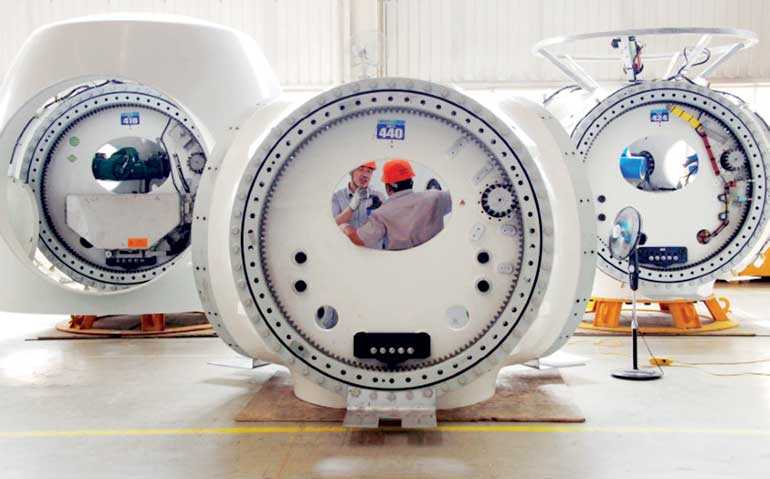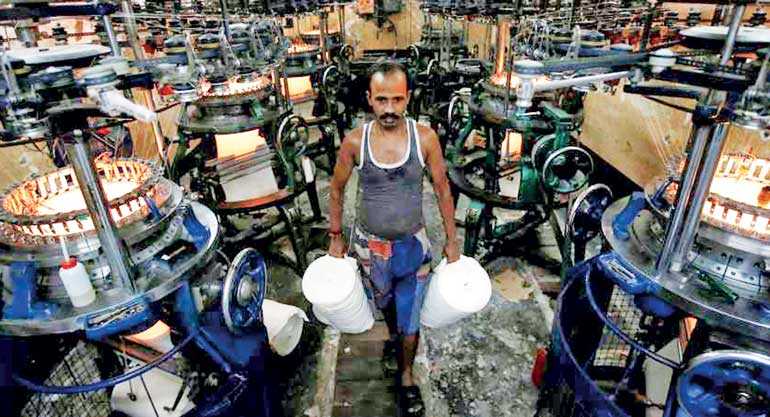Monday Mar 10, 2025
Monday Mar 10, 2025
Tuesday, 4 September 2018 00:12 - - {{hitsCtrl.values.hits}}

TOKYO (Reuters): Manufacturing activity in major Asian economies took a hit from weak export orders in August, a sign firms are starting to feel the pinch from intensifying trade friction between the United States and China that many fear could derail global growth.
Surveys of purchasing managers released on Monday showed persistent pressure on key exporting destinations China, Japan and South Korea.
In China, its vast manufacturing sector grew at the slowest pace in more than a year in August, with export orders shrinking for a fifth month.
Export orders also shrank in Japan and South Korea, suggesting that increasing protectionism and concerns of slower Chinese demand are weighing on Asia’s export-reliant economies.
Separate data showed Japanese corporate capital expenditure jumped in the second quarter by the most since 2006, though some analysts warn that global trade tensions may cloud the outlook.
“The tit-for-tat tariff retaliation hurts China’s economy far more than that of the United States. And when you look at Asia’s economic prospects, much depends on whether China could avoid a sharp slowdown in growth,” said Yoshiki Shinke, chief economist at Dai-ichi Life Research Institute in Japan.
US President Donald Trump’s relentless “America First” trade push has hurt confidence in many countries and hammered Asian stocks, as investors fret about the hit to global supply chains.
The fear is that the escalating tariff conflict will freeze business investment and trade in a blow to global growth. Trump has said he is ready to implement new tariffs as soon as a public comment period on the plan ends on Thursday, which would be a major escalation after Washington already applied tariffs on $50 billion of exports from China.
In Germany there are signs the global trade tensions are having a more noticeable impact with industrial orders figures for July expected to show only a small rise, after falling by the most in nearly a year-and-a-half in June.
While the US economy remains on a solid footing thanks to huge tax cuts by Trump, some analysts say growth has now peaked.
A Reuters poll last month forecast growth in the world’s biggest economy will slow steadily in coming quarters, with analysts expecting Trump’s trade war to inflict damage.
Another poll showed a similarly cautious outlook for euro zone growth over the remainder of this year and in 2019.
China’s Caixin/Markit Manufacturing Purchasing Managers’ Index (PMI) fell to 50.6 in August from July’s 50.8, matching economists’ forecasts. While the index remained above the 50-point mark that separates growth from contraction for the 15th consecutive month, it was the weakest since June 2017.
New export orders, an indicator of future activity, have contracted for the longest stretch since the first half of 2016, the Caixin PMI showed.
“The manufacturing sector continued to weaken amid soft demand, even though the supply side was still stable,” Zhengsheng Zhong, director of Macroeconomic Analysis at CEBM Group, said in a note accompanying the survey. “China’s economy is now facing relatively obvious downward pressure.”
Trump, who has threatened to impose duties on virtually all of the more than $500 billion of Chinese goods exported to the United States each year, told Reuters in an interview earlier this month that resolving the trade war with China would “take time” and that he had “no time frame” for ending it.
In South Korea, another key manufacturing destination, factory activity contracted for a sixth consecutive month in August as export orders shrank for the first time in three months, a PMI survey showed.While Japan’s manufacturing activity expanded in August at a slightly faster pace than the previous month, export orders fell in a fresh sign of the damage from intensifying global trade frictions.
Asian economies less reliant on exports fared better with PMI rising in Indonesia and Malaysia.
Australian manufacturers’ activity picked up in August thanks to a rebound in new orders and exports. But separate data showed the country’s retail sales fizzled out in July, pointing to a subdued start for the third quarter.

Growth in India’s manufacturing sector unexpectedly slowed in August as domestic demand softened, a private business survey showed on Monday.
Data on Friday showed India’s economy expanded 8.2 percent in the April-June quarter, its fastest pace in more than two years, driven by solid growth in manufacturing and consumer spending.
But the Nikkei Manufacturing Purchasing Managers’ Index, compiled by IHS Markit, suggested a slight loss of momentum last month.
The activity gauge fell to a three-month low of 51.7 from July’s 52.3. Analysts polled by Reuters had expected growth to pick up, forecasting a reading of 52.8.
Still, the rate of expansion remained solid. The PMI has not been below the 50-mark which separates growth from contraction since July 2017, when manufacturing took a hit from the hasty implementation of a goods and services tax.
Although sub-indices tracking output and total orders touched three-month lows last month, foreign demand rose at the quickest pace since February despite global trade tensions. A weakening Indian rupee, which has been hitting fresh lows against the US dollar in the past few months, likely boosted exports.
Meanwhile, input prices rose at the slowest pace since May and the rate of increase in output prices fell, signalling a further easing in overall inflation pressures.
“Indian manufacturers retained positive projections for output over the next 12 months, but the level of sentiment eased in August. Indeed, some of the key headwinds facing the economy include high global oil prices, monetary policy tightening, and capital outflows from emerging markets,” IHS Markit economist Aashna Dodhia said in a statement.
Discover Kapruka, the leading online shopping platform in Sri Lanka, where you can conveniently send Gifts and Flowers to your loved ones for any event including Valentine ’s Day. Explore a wide range of popular Shopping Categories on Kapruka, including Toys, Groceries, Electronics, Birthday Cakes, Fruits, Chocolates, Flower Bouquets, Clothing, Watches, Lingerie, Gift Sets and Jewellery. Also if you’re interested in selling with Kapruka, Partner Central by Kapruka is the best solution to start with. Moreover, through Kapruka Global Shop, you can also enjoy the convenience of purchasing products from renowned platforms like Amazon and eBay and have them delivered to Sri Lanka.
Discover Kapruka, the leading online shopping platform in Sri Lanka, where you can conveniently send Gifts and Flowers to your loved ones for any event including Valentine ’s Day. Explore a wide range of popular Shopping Categories on Kapruka, including Toys, Groceries, Electronics, Birthday Cakes, Fruits, Chocolates, Flower Bouquets, Clothing, Watches, Lingerie, Gift Sets and Jewellery. Also if you’re interested in selling with Kapruka, Partner Central by Kapruka is the best solution to start with. Moreover, through Kapruka Global Shop, you can also enjoy the convenience of purchasing products from renowned platforms like Amazon and eBay and have them delivered to Sri Lanka.